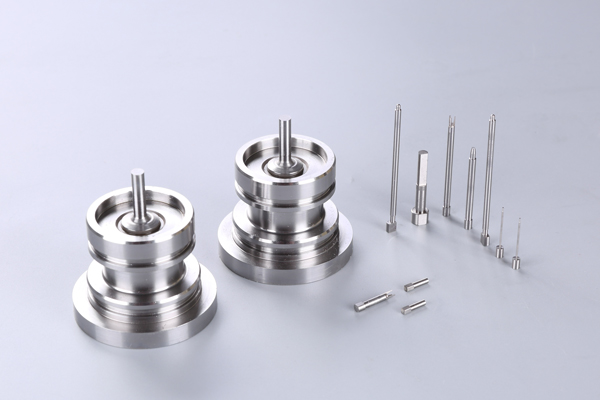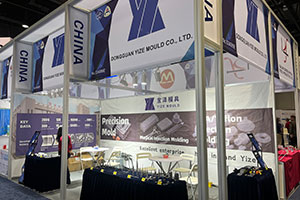How to Classify the Precision Grades of Tungsten Carbide Dies
I. Introduction In the modern industrial production system, tungsten carbide dies hold a pivotal position and are undoubtedly indispensable key tools. Their precision grades are closely linked to product quality […]
I. Einleitung
In the modern industrial production system, tungsten carbide dies hold a pivotal position and are undoubtedly indispensable key tools. Their precision grades are closely linked to product quality and directly impact production efficiency. With the continuous innovation of industrial technology and increasingly fierce market competition, the requirements for the precision of tungsten carbide dies are also rising steadily. In this context, how to scientifically and reasonably classify the precision grades of tungsten carbide dies has become an urgent issue in the die manufacturing industry. This article will delve into the concept, classification basis, classification methods, and practical applications of the precision grades of tungsten carbide dies.
II. The Concept of Precision Grades of Tungsten Carbide Dies
The precision grades of tungsten carbide dies refer to the specific grades achieved by performance indicators such as dimensional accuracy, shape accuracy, positional accuracy, and surface quality during the manufacturing and use of tungsten carbide dies. These performance indicators are not only the core criteria for evaluating the quality of tungsten carbide dies but also key factors influencing product quality and production efficiency. Accurately grasping the precision grades corresponding to these indicators is of great significance for improving die manufacturing standards and ensuring the stability of product quality.
Unser Fabrikgeschäft: Hartmetallteile, Formteile, medizinische Spritzgussformen, Präzisionsspritzgussformen, Teflon-PFA-Spritzguss, PFA-Rohrverschraubungen. E-Mail: [email protected],whatsapp:+8613302615729.

III. Basis for Classifying the Precision Grades of Tungsten Carbide Dies
(A) Die Usage Requirements
Tungsten carbide dies for different purposes have significantly different precision requirements. For example, dies used for forming precision electronic components demand extremely high precision grades to ensure the dimensional accuracy and performance stability of the components. In contrast, dies for forming general building components have relatively lower precision requirements. Therefore, when classifying precision grades, it is essential to fully consider the specific usage scenarios and requirements of the dies to ensure that the die precision matches the product needs.
(B) Feasibility of Manufacturing Processes
The feasibility of manufacturing processes is a crucial foundation for classifying the precision grades of tungsten carbide dies. The manufacturing of high-precision dies often requires advanced processing equipment, superb process technology, and a strict quality control system. For instance, using high-precision CNC machining centers and precision grinding processes can achieve high-precision die processing. However, if an enterprise lacks the corresponding manufacturing process conditions and forcibly pursues high-precision grades, it will not only increase manufacturing costs but may also lead to unstable die quality. Therefore, when classifying precision grades, it is necessary to fully consider the existing manufacturing process level and technical capabilities of the enterprise.
(C) Economic Benefits
Economic benefits are an important factor that cannot be ignored when classifying the precision grades of tungsten carbide dies. Although high-precision dies can bring higher product quality and production efficiency, their manufacturing costs are also relatively high. For example, high-precision die materials, complex processing techniques, and strict quality inspections all increase the manufacturing costs of dies. Therefore, when classifying precision grades, it is necessary to comprehensively balance the relationship between manufacturing costs and economic benefits and find an optimal balance point to maximize economic benefits while meeting product quality requirements.
IV. Methods for Classifying the Precision Grades of Tungsten Carbide Dies
(A) Classification of Precision Grades
Based on the precision requirements of tungsten carbide dies, their precision grades can be divided into multiple categories, commonly including high-precision, medium-precision, and low-precision grades. Each precision grade has clear requirements for dimensional accuracy, shape accuracy, positional accuracy, and surface quality. For example, high-precision dies may require dimensional accuracy to be controlled at the micrometer level, with extremely strict standards for shape accuracy and positional accuracy, and a mirror-like surface quality. In contrast, low-precision dies have relatively relaxed requirements in these aspects.
(B) Quantification of Precision Indicators
To more accurately evaluate the precision grades of tungsten carbide dies, it is necessary to quantify each precision indicator. For example, dimensional accuracy can be expressed in terms of tolerance ranges, shape accuracy can be measured by parameters such as roundness and flatness, positional accuracy can be defined by indicators such as coaxiality and perpendicularity, and surface quality can be reflected by surface roughness values. By quantifying these indicators with specific numerical values, an objective and accurate basis can be provided for evaluating the precision grades of dies.
(C) Evaluation of Precision Grades
After the manufacturing of tungsten carbide dies is completed, a comprehensive evaluation of their precision grades is required. During the evaluation process, professional testing equipment and tools should be used to strictly test and measure each precision indicator of the dies. For example, a coordinate measuring machine can be used to detect the dimensional accuracy and positional accuracy of dies, and a surface roughness tester can be used to measure the surface quality of dies. Based on the test results, the precision grades of dies can be determined by referring to the pre-set precision grade standards, and the evaluation results should be recorded in detail in the die’s technical documents for future reference in use and maintenance.
V. Practical Applications of Classifying the Precision Grades of Tungsten Carbide Dies
(A) Guiding Die Design
The classification of precision grades of tungsten carbide dies provides important guidance for die design. During the design stage, designers can reasonably determine the precision grade requirements of dies based on the precision requirements of products and the manufacturing process level of the enterprise. For example, for products with high precision requirements, designers should choose high-precision die structures and adopt advanced design concepts and methods to ensure that the manufacturing precision of dies can meet the usage requirements of products.
(B) Controlling Manufacturing Costs
By scientifically and reasonably classifying the precision grades of tungsten carbide dies, manufacturing costs can be effectively controlled while ensuring product quality. For products with low precision requirements, enterprises can choose medium-precision or low-precision dies for production, reducing the manufacturing and procurement costs of dies. At the same time, reasonable precision grade classification can also avoid resource waste caused by excessive pursuit of high precision, improving the economic benefits of enterprises.
(C) Improving Production Efficiency
The use of high-precision dies can significantly improve production efficiency. Due to their higher processing accuracy and stricter process control, high-precision dies have shorter manufacturing cycles and lower scrap rates. For example, in mass production processes, high-precision dies can ensure the dimensional consistency and stability of products, reducing the production of defective and scrap products, thereby improving production efficiency and reducing production costs.
(D) Promoting Technological Progress
The classification of precision grades of tungsten carbide dies plays a positive role in promoting technological progress. As the market’s requirements for product precision continue to increase, die manufacturing enterprises need to continuously improve the manufacturing precision and technological level of dies to meet market demands. This prompts enterprises to increase investment in technological research and development and equipment updates, introduce advanced manufacturing processes and testing equipment, and cultivate high-quality technical talents, thereby driving technological progress and innovation in the entire industry.
VI. Schlussfolgerung
The classification of precision grades of tungsten carbide dies is an important task in the die manufacturing industry. Scientific and reasonable precision grade classification can ensure that the manufacturing precision of dies meets usage requirements, effectively reduce manufacturing costs, improve production efficiency, and promote industry technological progress. In practical applications, it is necessary to comprehensively consider factors such as die usage requirements, the feasibility of manufacturing processes, and economic benefits, and reasonably classify precision grades, quantify precision indicators, and evaluate precision grades to make the classification of precision grades of tungsten carbide dies more scientific, reasonable, and practical, providing strong support for the development of the die manufacturing industry.






